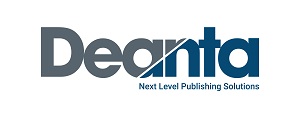Ten differences between book and journal publishers

Academic journals publishers, book publishers and university presses have similar remits—to acquire, edit, produce and distribute high quality content—but on closer inspection are a world apart. Deanta’s Patrick Shafe gives his opinions on ten key differences and what the books sector might learn from the journals world
1. A virtuous circle
The success of journals publishing has built confidence in the revenue that can be generated. But even more importantly, the subscriptions model it operates under creates a level of certainty about these revenues, which provides a robust platform for investment, growth and innovation. There is much more uncertainty in books publishing, which can lead to caution, under-investment and cost-cutting.
2. Competition
The success of journals publishing has led to consolidation in the industry, with the five most prolific companies accounting for more than half of all papers published. Consolidation of output means consolidation of profits, and the big five typically outperform the likes of Google and Apple when it comes to profit margins. Academic book publishers sit within a more fragmented industry and are typically smaller, even when they are within divisions of the world’s biggest publishing houses.
3. Efficiencies
Journals publishers have mastered the basics of maximising margins. Journals publishing is a machine, with every stage fine-tuned to make the process more efficient and streamlined. This efficiency extends to the ecosystem that has grown around the industry itself, with peer-review platforms, offshore vendors, technology consultants and aggregators all striving to keep the wheels spinning freely.
4. Speed to market
Subscription-based commercial models encourage frequency of production, and journal publishers have invested heavily in their products’ speed to market. Where books publishers might be doing well with a six-month window from submission to publication, timescales for journals are measured in days. As such, journals publishers and the vendors who serve them have invested heavily in the systemisation of processes. Innovations such as AI-led automation and XML-first workflows have ensured that speed can be maintained without any loss of quality.
5. Cost savings
Outsourcing elements of journals production that can be managed by skilled offshore vendors is a simple way to manage costs. In-house production teams have been replaced by production and operations managers, while technology-based workflows have allowed for the streamlining of staff and a reduced cost-per-article business model. Books publishers outsource too, but few do so with the same technological support and speed-to-market ambitions.
6 Added value
The technologies that support the journals industry have benefits far beyond speed, efficiencies and cost savings. Innovations such as XML-proofing and content enrichment through enhanced metadata have given a new lease of life to content, increasing its discoverability, usage and lifecycle and ultimately generating more revenue per product. The data that these technologies provide have also given publishers clearer visibility of their product lifecycles than ever before, allowing them to strategise and base daily decision-making on firm data.
7. A new digital mindset
As organisations embrace technology, new outcomes and new possibilities emerge. Organisations may begin by digitising their products, but true digital transformation happens at a mindset and organisation level. Book publishing remains a traditional industry, built on a print-first approach with siloed, hierarchical structures that encourage the status quo. The best publishers break this mould and see themselves as media companies—conduits between those who create knowledge and those whose lives are impacted by it.
8. Open Access
The call for just-in-time, leased access to online content led to the development of demand-driven acquisitions platforms for books, such as ProQuest and EBSCO. This, along with the rise of economic print-on-demand technologies, has contributed to uncertainty around physical book sales—once the mainstay of income for books publishers. Open Access offers opportunities for book publishers to adopt digital-first strategies and market product ahead of the print publication date, but journals publishers have plugged the revenue gap far quicker, by using a variety of models including Author Processing Charges.
9. Customer-centric innovation
In this new digital era, publishers of all types are recognising that opportunities abound to package and disseminate the content that they produce in a far wider range of formats. Pre and post-print servers, videos, infographics and conferences can all sit alongside the traditional article and book-shaped products of old. This extends the content lifecycle and creates a feedback loop from impact to author.
10. Hyper-connectivity
Having led the technology race for so long, journals publishers are beginning to reap the benefits of being hyper-connected. These companies have created customer-facing front offices delivering a real-time personalised customer experience and touchless interaction across all media. Transformation continues on the employee side, where back-office functions are driven by AI-led automation and an agile working culture. The technology spine of the business produces data-driven, customer-centric insights and allows the business to flex and adapt at pace.
Patrick Shafe is commercial director at Deanta Global. For more about Deanta’s services to publishers, click here.